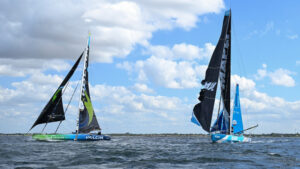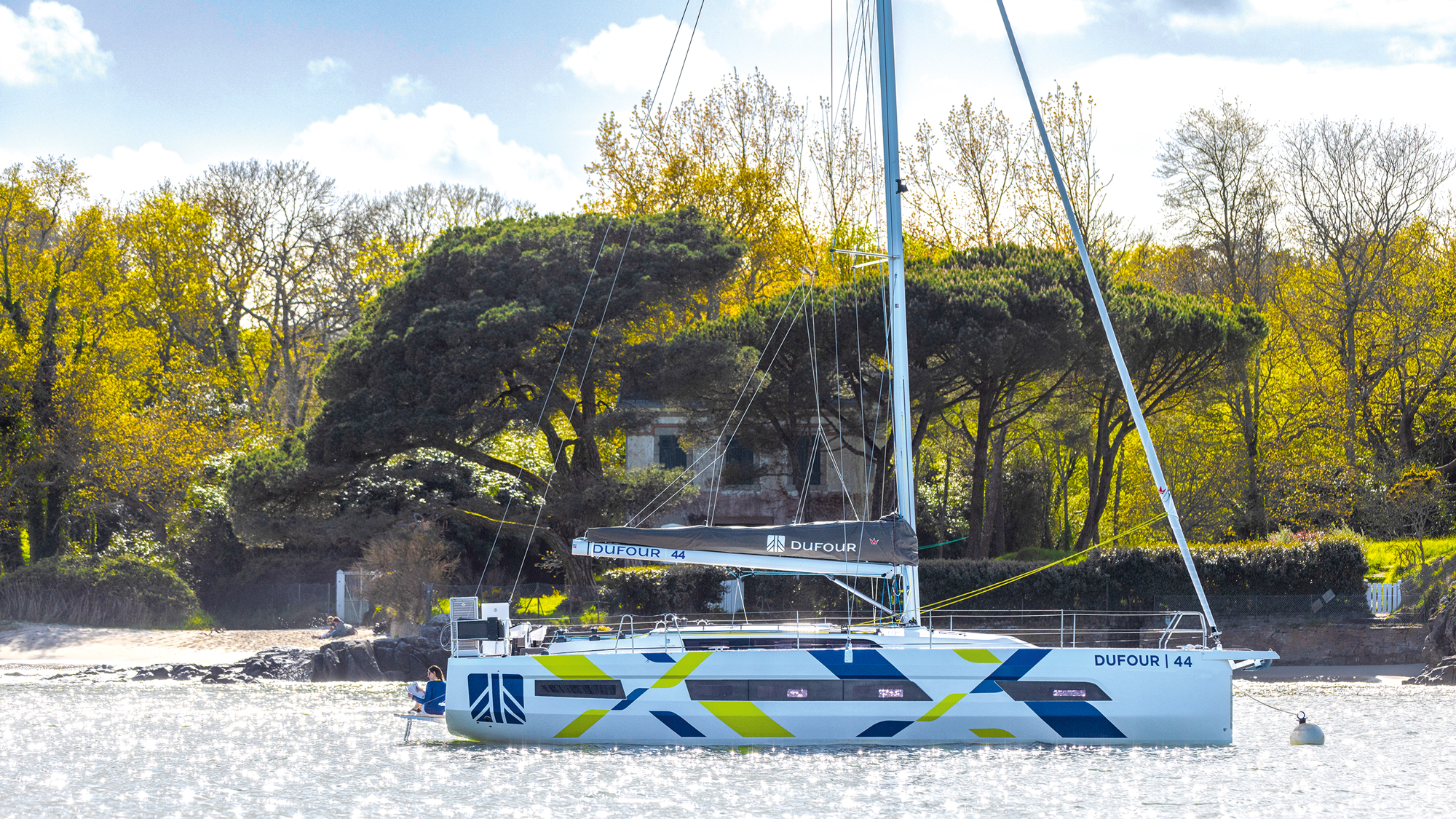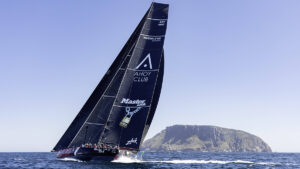When the pros are caught on camera making mistakes it proves there’s no such thing as a perfect sailor

You probably saw the collision between the Allagrande Mapei Racing and Team Holcim PRB IMOCAs just moments after the start of the Ocean Race Europe. In the way spectacular disasters are, it was as harrowing as it was addictive to watch. The ease at which Holcim’s foil cut through Allagrande’s headsail cloth was sickeningly impressive, and it’s lucky no one was hurt. But it was also proof of how remarkable these boats are.
The crash was a hearty reminder for us all: mistakes happen, even to the most skilled sailors. If you’re human, you make mistakes, especially in sailing. We need high-profile moments like this to change the culture around mistakes and to remind us that errors don’t make you a bad sailor.
There’s a story many new sailors tell themselves: “When I get good enough at sailing, I won’t mess up anymore.” Perfection feels like the goal, but that’s a myth: perfection is unachievable.
The reality is that mistakes are inevitable. Just consider all the factors that go hand-in-hand with sailing: fatigue, stress, appetite for risk, cognitive overload. Then combine it with the context of changeable weather, unpredictable competitors and high stakes decisions. It’s ludicrous to think otherwise.
I believe we all get allocated the same number of mistakes in life. They just scale relative to your environment and abilities.
Beginner sailors make ‘rookie’ mistakes like tying fenders wrong and dropping them overboard or putting up the wrong headsail.
Intermediate sailors make bolder mistakes, like reefing too late or making sloppy nav calls, usually just when they need a reminder to stay humble.

There was also a crash in Leg 7 of the last Ocean Race
Pros make high speed, high stakes mistakes like aggressive start line tactics or split-second miscalculations. What changes as you progress isn’t the quantity of mistakes you make, it’s the type of mistakes. And while a crash in the Ocean Race might seem bigger than a poorly tied knot, I’ve seen beginners suffer near-panic over small errors. How awful a mistake feels has more to do with you than the slip-up itself.
I hate making mistakes. I hate looking silly or messing up, or worse: being blamed. It probably stems from a fear of rejection. It’s something I have to actively work on.
Mistakes are part of learning and avoiding them means avoiding improving. And the more we fear mistakes the more likely we are to make them. Just put someone under pressure and watch them tie a knot while shouting the oh-so-tempting “hurry up” and you’ll see their hands shake, their brain fog over and voila, it will be tied wrong.
When mistakes happen, what matters most is how you manage them. My mother’s voice still rings in my ears: “I don’t care who started it. Just sort it.” She was talking to my brothers and younger self, but it’s just as relevant at sea. If mistakes are inevitable and we all suffer the same amount, then worrying about blame in the moment is useless. Just look at Kiel: both teams immediately set about repairing their boats to make the next leg. The protest will be resolved later, but the priority was getting back in the race.
Article continues below…
‘Why is anchoring still such a misunderstood skill?’ – Nikki Henderson
As the sun slipped below the horizon, so did the noise of the day. The thermal wind softened, the engine…
‘Has ‘social media influencer’ sailing gone too far?’ – Nikki Henderson
Our defences have run out: social media has well and truly infiltrated our precious, antiquated sailing world. It’s terrifying to…
On the day the Kiel crash dominated my social news feed, I was helping friends handle a mini crisis of their own. One crew member’s passport had been packed in the wrong bag and was halfway to Hamburg on a Boeing 777. If we’d wasted time focusing on whose fault it was, we’d have missed the window to get the passport on the return flight. But we let it go, jumped into action, and two generous strangers ferried it back across the Atlantic just in time for departure. Faith in humanity, restored.
So, if you want to help make sailing more welcoming for us all, leave the blame behind. If you, or someone else makes a mistake, focus first on sorting out the problem then, second, reduce the chance of it happening again by analysing, learning and implementing better systems.
So, thank you Holcim PRB, Allagrande Mapei, and the Ocean Race team for giving us a real-life example of elite sailors learning from, not hiding from, their errors.
The goal isn’t to eliminate mistakes; it’s to handle them well. Sure, the crash was expensive, dangerous and costly in the moment. But maybe it will save others from similar fates – not by avoiding mistakes entirely, but by avoiding the catastrophic aftermath that comes when errors are buried instead of addressed.
 If you enjoyed this….
If you enjoyed this….
Yachting World is the world’s leading magazine for bluewater cruisers and offshore sailors. Every month we have inspirational adventures and practical features to help you realise your sailing dreams.Build your knowledge with a subscription delivered to your door. See our latest offers and save at least 30% off the cover price.
Note: We may earn a commission when you buy through links on our site, at no extra cost to you. This doesn’t affect our editorial independence.
The post ‘The crash was a reminder for us all’ – Nikki Henderson appeared first on Yachting World.




